Technical Notes (III)
The chapters "Technical Notes" are designed especially for those who are more interested in the problem, or even want to investigate it on their own. All others can skip these chapters without disadvantage.
In principle, the final decision on the outcome of the game is already fallen. Therefore, it only remains to draw attention to some special points.
This continues the "Technical Notes (II)" from  195.
195.
| The First Genuine Gote Move |  495 495 |
| The Tsuke of Yamada Shinji |  496 496 |
| The Hanezeki Exchange |  496 496 |
| Surrender of the Atari in the Nakade |  497 497 |
| Territory-Destroying Options are Evenly Distributed |  497 497 |
| Order of Moves for Filling the Nakade |  498 498 |
| Choice Between Capture and Semeai Variation |  499 499 |
| The Oki of Joachim Meinhardt |  501 501 |
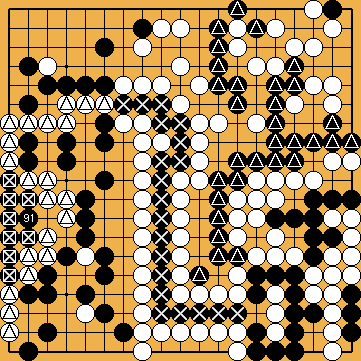
 completes the nine-stone nakade on the left edge. However, this move does not contain a direct threat against any of
completes the nine-stone nakade on the left edge. However, this move does not contain a direct threat against any of  's partial groups
's partial groups  . Therefore, there is no need for
. Therefore, there is no need for  . Further information on this subject can be found later (
. Further information on this subject can be found later (

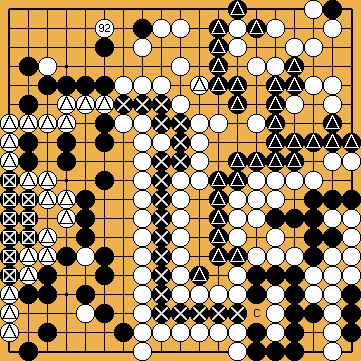
 , kindly shown to us by Yamada Shinji 6p, starts the endgame. In principle, this move can be played at any time - as long as capturing the hanezeki's tail
, kindly shown to us by Yamada Shinji 6p, starts the endgame. In principle, this move can be played at any time - as long as capturing the hanezeki's tail  , with a move at
, with a move at  , is possible for
, is possible for 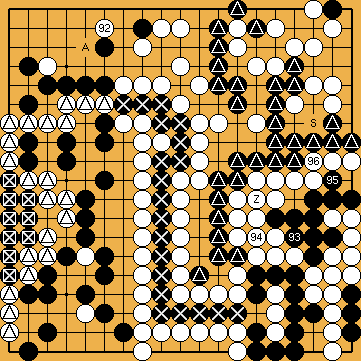
 /
/  must be played at the right moment. If played too early, a potential ko-threat would be given away. If
must be played at the right moment. If played too early, a potential ko-threat would be given away. If  waited for too long,
waited for too long,  herself, gaining additional profit when choosing the Semeai Variation later, with a move at
herself, gaining additional profit when choosing the Semeai Variation later, with a move at  .
. , a move at 95 is double-sente, so
, a move at 95 is double-sente, so  destroys one point of
destroys one point of 
 566a
566a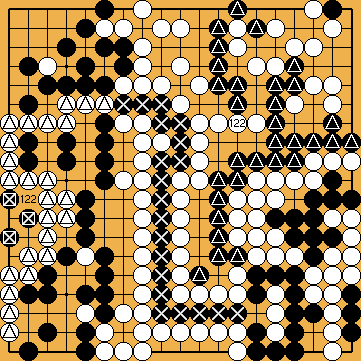
 , preferring an "unconditional" continuation. The alternate atari in the nakade would in principle create a ko-shape, but which is quite irrelevant in this problem, because
, preferring an "unconditional" continuation. The alternate atari in the nakade would in principle create a ko-shape, but which is quite irrelevant in this problem, because 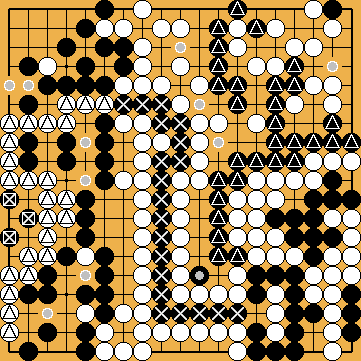
 . However, destroying one point of territory is strongly coupled with losing an own liberty in the Main Semeai, which enables the opponent to return the favour. Therefore, a mutual reduction of territories will not affect the final score. Please see also "2012 - Occupying White's Liberties" (
. However, destroying one point of territory is strongly coupled with losing an own liberty in the Main Semeai, which enables the opponent to return the favour. Therefore, a mutual reduction of territories will not affect the final score. Please see also "2012 - Occupying White's Liberties" (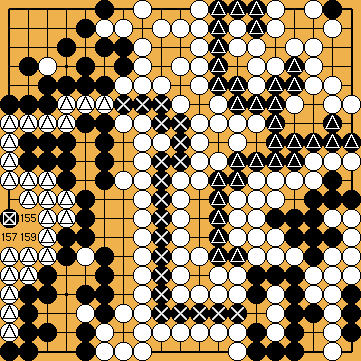
 -
-  as shown here, to get a squarish shape.
as shown here, to get a squarish shape.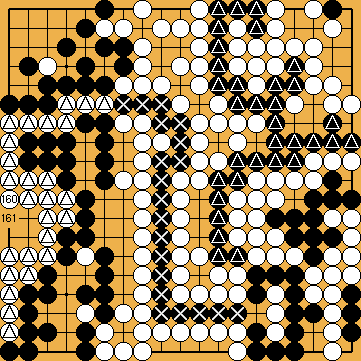
 ,
,  , to pre-empt two eyes for
, to pre-empt two eyes for 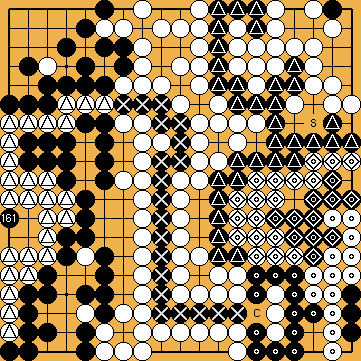
 (14 stones plus 14 points of territory),
(14 stones plus 14 points of territory),  (14 / 18 stones plus 14 / 18 points of territory),
(14 / 18 stones plus 14 / 18 points of territory), 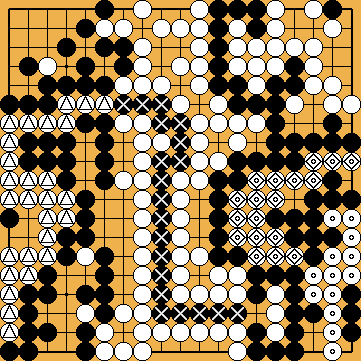
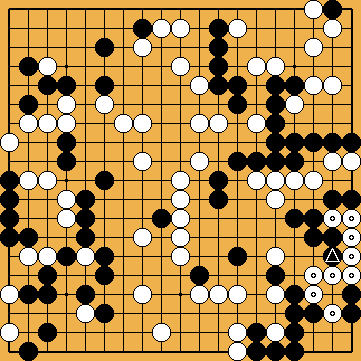
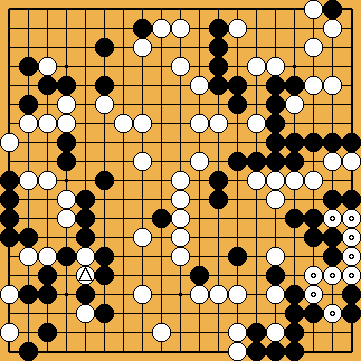
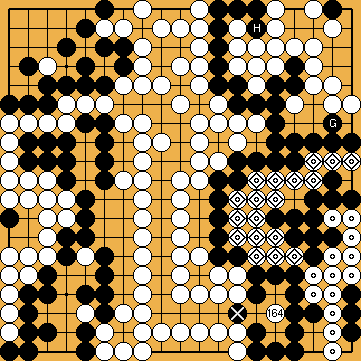
 in the lower right corner.
in the lower right corner. , and the hasami-tsuke
, and the hasami-tsuke  , in the upper right corner - this move - after which Joachim sought for so long - is part of a sub-variation of our solution "only". Nevertheless, this move has kept its very great importance.
, in the upper right corner - this move - after which Joachim sought for so long - is part of a sub-variation of our solution "only". Nevertheless, this move has kept its very great importance.